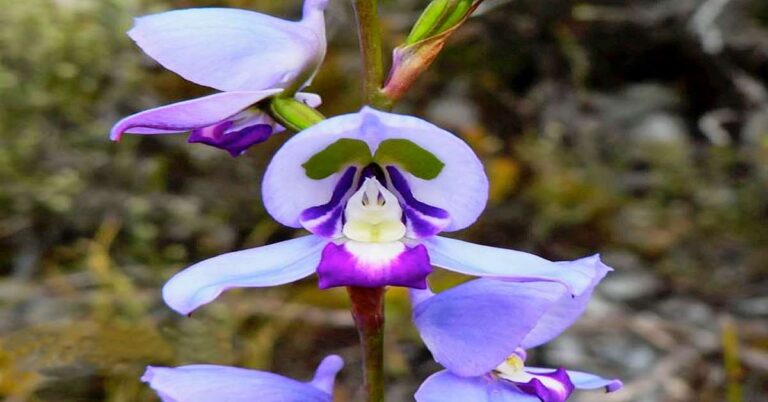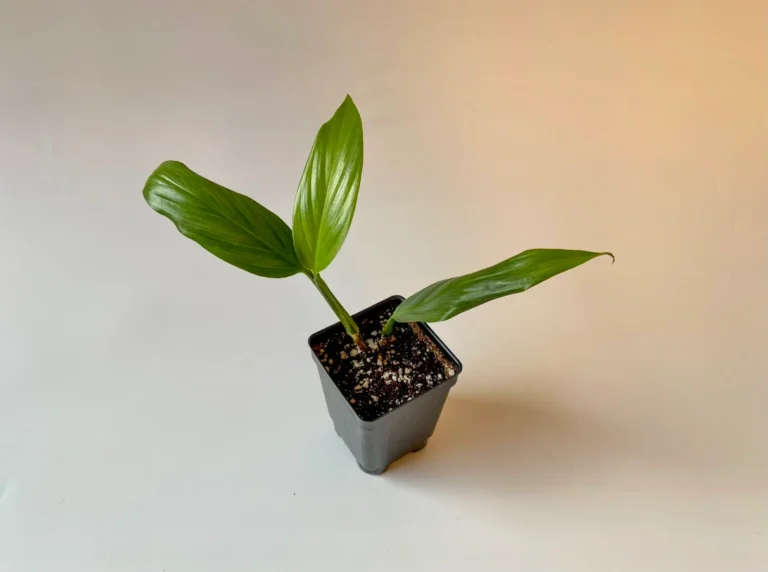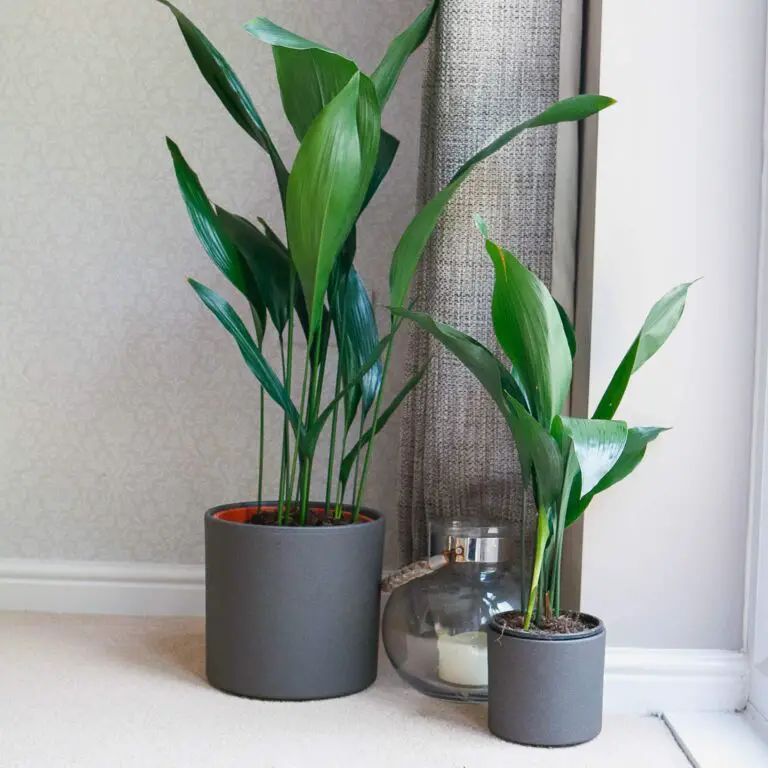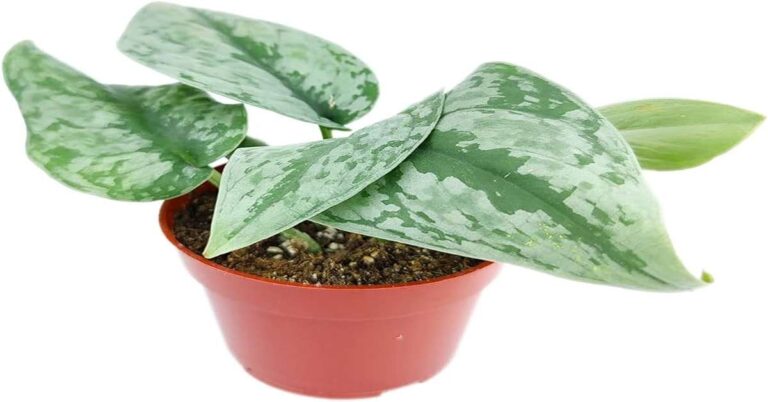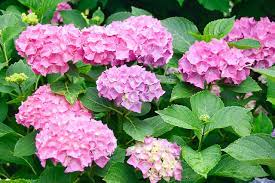1. Morning Glory
- Scientific name: Ipomoea purpurea
- Common names: Morning glory, bindweed, heavenly blue, bluebell
- Family: Convolvulaceae
- Origin: Mexico, Central America
- Height: 6-12 feet
- Bloom time: Summer to fall
- Flowers: Trumpet-shaped, blue, white, or pink
- Leaves: Heart-shaped
- Soil: Well-drained, loamy soil
- Sun exposure: Full sun
- Watering: Water regularly, especially during hot, dry weather
- Fertilizer: Fertilize monthly with a balanced fertilizer
- Pests and diseases: Susceptible to aphids, powdery mildew, and wilt
- Propagation: Seeds, cuttings
- Hardiness zone: 3-9
- Significance: Symbolizes new beginnings, hope, and happiness
- Uses: Ornamental plant, cut flower, food
- Toxicity: All parts of the plant are poisonous if ingested
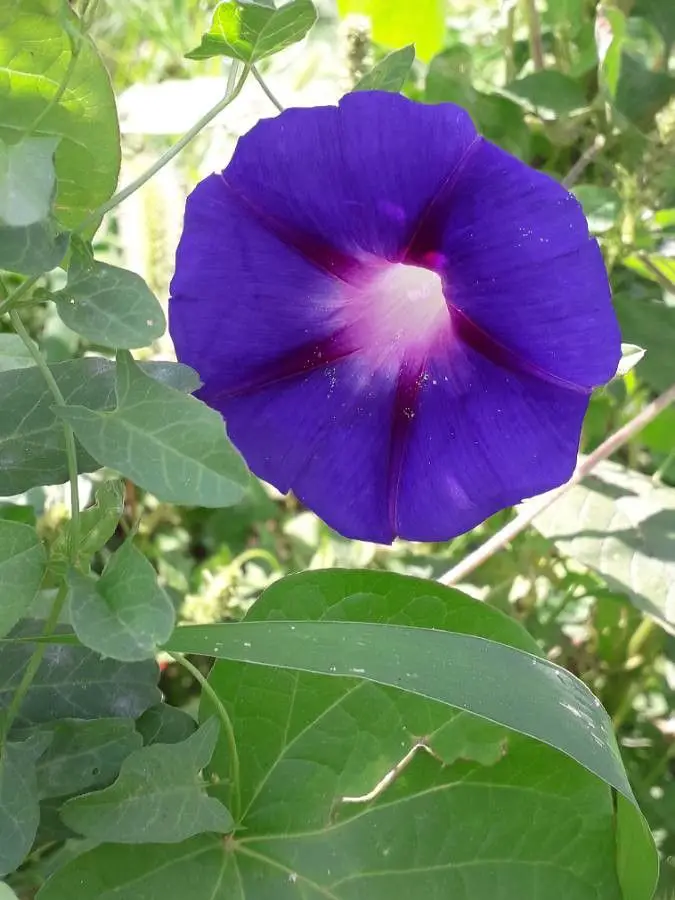
Morning Glory Plant: The Best Choice for Your Fence Line
If you’re looking to add a touch of enchantment and beauty to your fence line, the Morning Glory plant (Ipomoea) is an exceptional choice. Known for its vibrant, trumpet-shaped flowers that unfurl in the morning sun, this climbing vine is a true showstopper in any garden. Not only does it bring aesthetic appeal, but it also serves practical purposes, making it the ideal plant for your fence line.
Why Morning Glory?
The Morning Glory plant’s versatility and ease of growth make it a popular favorite among gardeners of all levels. Its rapid growth rate allows it to quickly cover unsightly fence lines, providing an elegant and lush green backdrop to your outdoor space. Furthermore, Morning Glory comes in various shades, including purple, pink, blue, and white, allowing you to pick the colors that perfectly complement your garden’s theme.
Low Maintenance, High Rewards
One of the key benefits of the Morning Glory plant is its low-maintenance nature. It thrives in a wide range of soil types and requires little attention once established. Providing ample sunlight and occasional watering is usually sufficient to keep it healthy and blooming throughout the growing season. This ease of care makes it an excellent choice for busy gardeners or those new to gardening.
Attracting Wildlife
Aside from its visual appeal, Morning Glory is also a pollinator magnet. The nectar-rich flowers attract butterflies, bees, and hummingbirds, adding an additional touch of life and movement to your garden. By supporting pollinators, you contribute to the ecological balance and the overall health of your garden ecosystem.
Cautions and Considerations
While the Morning Glory plant offers numerous benefits, it’s essential to exercise caution as it can be invasive in some regions. Regular pruning and monitoring can help prevent it from taking over your garden space. Additionally, avoid planting it near delicate or precious plants, as its vigorous growth can sometimes overshadow or outcompete nearby vegetation.
Sure, here is the complete information on Thuja in 20 points without pics:
2. Thuja
| Scientific name | Thuja occidentalis |
| Common names | Arborvitae, American arborvitae, white cedar, thuja |
| Family | Cupressaceae |
| Origin | Eastern North America |
| Height | 20-50 feet |
| Spread | 10-20 feet |
| Bloom time | Spring |
| Flowers | Inconspicuous, yellow-green |
| Leaves | Scale-like, dark green |
| Soil | Well-drained, loamy soil |
| Sun exposure | Full sun to partial shade |
| Watering | Water regularly, especially during hot, dry weather |
| Fertilizer | Fertilize annually with a balanced fertilizer |
| Pests and diseases | Susceptible to scale, bagworms, and cedar apple rust |
| Propagation | Seed, cuttings, air layering |
| Hardiness zone | 3-8 |
| Significance | Symbolizes longevity, strength, and protection |
| Uses | Ornamental plant, hedge, windbreak |
| Toxicity | All parts of the plant are poisonous if ingested |

Thuja Plant: The Best Choice for Your Fence Line
When it comes to finding the perfect plant to enhance your fence line, look no further than the Thuja. Also known as Arborvitae, the Thuja is an evergreen conifer that offers a plethora of benefits, making it an excellent addition to your outdoor space. With its dense foliage, attractive growth pattern, and easy maintenance, the Thuja plant is undoubtedly a top contender for creating a stunning and functional fence line.
Why Choose Thuja?
The Thuja plant boasts a range of desirable qualities that make it an ideal choice for fence line landscaping. Its tall, columnar shape provides excellent privacy and acts as a natural barrier against wind and noise. If you’re seeking a lush, green backdrop that remains vibrant year-round, the Thuja’s evergreen nature ensures your fence line looks picturesque even during the winter months.
Low Maintenance and Resilient
For homeowners with busy schedules or those who prefer a fuss-free garden, the Thuja is a dream come true. This low-maintenance plant requires minimal attention once established. It thrives in various soil types and is relatively drought-tolerant, reducing the need for constant watering. Additionally, its natural resistance to pests and diseases means you can enjoy a thriving fence line without the headache of frequent monitoring.
Versatility and Aesthetics
Thuja comes in various cultivars, each offering unique features to suit your specific needs. Whether you prefer a compact variety like Thuja occidentalis ‘Smaragd’ for limited spaces or a taller option like Thuja plicata ‘Green Giant’ for enhanced privacy, there’s a Thuja cultivar for every garden. Its rich green foliage and soft, feathery texture add a touch of elegance and sophistication to any landscape.
Planting and Care Tips
When planting Thuja for your fence line, ensure you provide adequate spacing between individual plants to accommodate their mature size. Regular watering during the establishment phase is crucial to ensure strong root development. Once established, the Thuja’s water needs are minimal. Annual pruning can help maintain its shape and prevent overgrowth.
Backyard Areca Palm Hedge
3. Chocolate Vine
| Characteristic | Value |
|---|---|
| Scientific name | Akebia quinata |
| Common names | Chocolate vine, five-leaf chocolate vine, five-leaf akebia, chocolate flower |
| Family | Lardizabalaceae |
| Origin | China, Japan, Korea |
| Height | 10-20 feet |
| Spread | 10-15 feet |
| Bloom time | Spring |
| Flowers | Chocolate-scented, purple-brown |
| Leaves | Dark green, heart-shaped |
| Soil | Well-drained, loamy soil |
| Sun exposure | Full sun to partial shade |
| Watering | Water regularly, especially during hot, dry weather |
| Fertilizer | Fertilize monthly with a balanced fertilizer |
| Pests and diseases | Susceptible to powdery mildew, aphids, and scale |
| Propagation | Seed, cuttings, air layering |
| Hardiness zone | 5-9 |
| Significance | None |
| Uses | Ornamental plant, edible fruit |
| Toxicity | None |
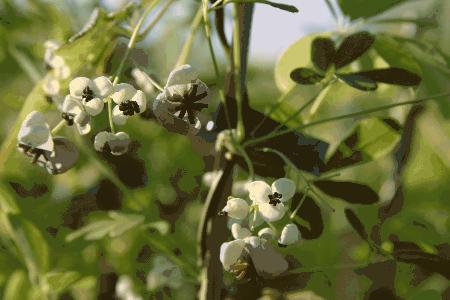
Chocolate Vine Plant: The Best Choice for Your Fence Line
If you’re looking for a unique and delightful addition to your fence line, the Chocolate Vine plant (Akebia quinata) is an excellent choice. With its striking appearance, sweet fragrance, and easy-going nature, this climbing vine brings a touch of elegance and charm to any garden. Discover why the Chocolate Vine is gaining popularity among gardeners and how it can transform your fence line into a mesmerizing and aromatic haven.
Exquisite Beauty and Aroma
The Chocolate Vine plant gets its name from the rich chocolate-like scent emitted by its deep purple flowers in early spring. Not only does it enchant you with its delightful aroma, but it also captivates your eyes with its unique foliage. The vine’s compound leaves consist of five leaflets, giving it a tropical and lush appearance that stands out among traditional fence line plants.
Fast Growth and Natural Coverage
One of the most significant advantages of the Chocolate Vine is its rapid growth rate. Within a short time, it can effectively cover your fence line, creating a living, green screen that offers privacy and a touch of natural beauty. Its ability to thrive in both sun and partial shade makes it versatile for various garden conditions.
Low Maintenance and Hardy
For those seeking a hassle-free fence line plant, the Chocolate Vine fits the bill. Once established, it requires minimal maintenance, making it an attractive choice for both seasoned gardeners and beginners. Its hardy nature allows it to tolerate a wide range of soil types and resist common pests and diseases, ensuring a long-lasting and resilient addition to your garden.
Edible Treats
Surprisingly, the Chocolate Vine not only delights your senses but also your taste buds! Its edible fruits, known as “akebia,” are not only delicious but also rich in vitamins and antioxidants. These oval-shaped fruits have a unique flavor, combining elements of banana, kiwi, and guava, making them a delightful and healthy treat straight from your fence line.
Cautions and Pruning
While the Chocolate Vine is a remarkable plant, it’s essential to be cautious about its growth pattern. Regular pruning is necessary to prevent it from becoming invasive in certain regions. By keeping a watchful eye on its growth and performing occasional trimming, you can enjoy its beauty without any concerns.
4. Forsythia
| Characteristic | Value |
|---|---|
| Scientific name | Forsythia × intermedia |
| Common names | Forsythia, golden bell, golden chain |
| Family | Oleaceae |
| Origin | China, Korea, Japan |
| Height | 4-6 feet |
| Spread | 4-6 feet |
| Bloom time | Early spring |
| Flowers | Yellow |
| Leaves | Green, oval |
| Soil | Well-drained, loamy soil |
| Sun exposure | Full sun |
| Watering | Water regularly, especially during hot, dry weather |
| Fertilizer | Fertilize annually with a balanced fertilizer |
| Pests and diseases | Susceptible to aphids, scale, and powdery mildew |
| Propagation | Seed, cuttings, air layering |
| Hardiness zone | 5-8 |
| Significance | Symbolizes new beginnings and spring |
| Uses | Ornamental plant, hedge, cut flower |
| Toxicity | None |
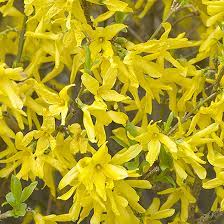
Forsythia Plant: The Best Choice for Your Fence Line
When it comes to adding a burst of vibrant color and early spring cheer to your fence line, the Forsythia plant (Forsythia spp.) emerges as a top contender. This deciduous shrub is a delightful sight to behold with its abundant, golden-yellow blooms that appear even before its leaves. If you’re looking to transform your fence into a stunning tapestry of sunny hues, while enjoying a range of practical benefits, the Forsythia is undoubtedly the best choice.
A Pop of Sunshine
As winter recedes and the world starts to awaken, the Forsythia takes center stage with its captivating display of bright, yellow flowers. These eye-catching blooms not only add cheer to your garden but also signal the arrival of spring in all its glory. The early blossoms make Forsythia an excellent choice for creating a striking focal point along your fence line.
Hardiness and Easy Care
One of the most significant advantages of the Forsythia plant is its hardiness and adaptability. It thrives in a variety of soil types and requires minimal maintenance once established. This makes it an ideal choice for busy gardeners or those new to gardening, as it can withstand different conditions and still flourish abundantly.
Privacy and Natural Fence
The Forsythia’s dense and bushy growth pattern lends itself well to creating a natural fence line. As it matures, this deciduous shrub forms a lush, green wall that offers privacy and acts as a barrier against prying eyes. Enjoy the beauty of your garden without worrying about nosy neighbors or passersby.
Versatility in Landscaping
Apart from being an attractive fence line plant, the Forsythia can be used in various landscaping styles. It works well as a standalone specimen, in mixed borders, or as a colorful backdrop to other plants. Its versatility allows you to explore different design possibilities and create a visually appealing and harmonious outdoor space.
Pruning and Maintenance Tips
To maintain the Forsythia’s vibrant display year after year, timely pruning is essential. After the flowering season, prune the shrub to shape it and encourage new growth for the following year. Regular maintenance, such as watering during dry spells and occasional fertilization, will ensure its continued health and beauty.
5. Leyland cypress
| Characteristic | Value |
|---|---|
| Scientific name | Cupressocyparis leylandii |
| Common names | Leyland cypress, Leylandii |
| Family | Cupressaceae |
| Origin | Hybrid of Cupressus macrocarpa and Chamaecyparis nootkatensis |
| Height | 60-100 feet |
| Spread | 30-50 feet |
| Bloom time | Spring |
| Flowers | Inconspicuous, yellow-green |
| Leaves | Scale-like, dark green |
| Soil | Well-drained, loamy soil |
| Sun exposure | Full sun |
| Watering | Water regularly, especially during hot, dry weather |
| Fertilizer | Fertilize annually with a balanced fertilizer |
| Pests and diseases | Susceptible to scale, bagworms, and cedar apple rust |
| Propagation | Cuttings, air layering |
| Hardiness zone | 6-8 |
| Significance | None |
| Uses | Ornamental plant, hedge, windbreak |
| Toxicity | All parts of the plant are poisonous if ingested |
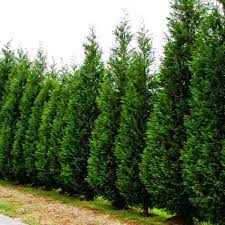
Leyland Cypress Plant: The Best Choice for Your Fence Line
If you’re seeking a fence line that offers both beauty and functionality, the Leyland Cypress plant (x Cupressocyparis leylandii) stands out as a top-notch option. With its tall, graceful stature, lush evergreen foliage, and rapid growth rate, this popular coniferous tree creates a stunning and practical living screen for your outdoor space. Discover why the Leyland Cypress is an ideal choice for enhancing your fence line, combining aesthetics with functionality seamlessly.
Elegant Privacy Screen
The Leyland Cypress’s towering height and dense foliage make it a perfect natural privacy screen. Within a short period, this fast-growing evergreen can transform your fence line into an elegant green wall, shielding your garden from prying eyes and providing a peaceful retreat. Enjoy the added benefit of enhanced security and a sense of seclusion in your outdoor haven.
Year-Round Greenery
Unlike many other fence line plants, the Leyland Cypress retains its rich green color throughout the year. Whether it’s the peak of summer or the chill of winter, the vibrant foliage ensures your fence line remains lush and picturesque, adding life and beauty to your garden even in the coldest months.
Adaptable and Hardy
The Leyland Cypress is remarkably adaptable to various soil types and can tolerate a wide range of environmental conditions, from full sun to partial shade. This versatility makes it an excellent choice for different garden settings and ensures it thrives in diverse climates.
Low Maintenance and Effortless Growth
If you prefer a low-maintenance fence line, the Leyland Cypress will be your go-to plant. Once established, it requires minimal care, with occasional watering and pruning to maintain its shape. Its natural resistance to pests and diseases further contributes to its easy-going nature, allowing you to enjoy a hassle-free garden experience.
Planting Tips for Success
To ensure your Leyland Cypress thrives along your fence line, plant it in well-draining soil and provide ample space for its growth. Regular watering during its establishment phase is crucial for robust root development. As it matures, occasional trimming will help maintain its height and density.


